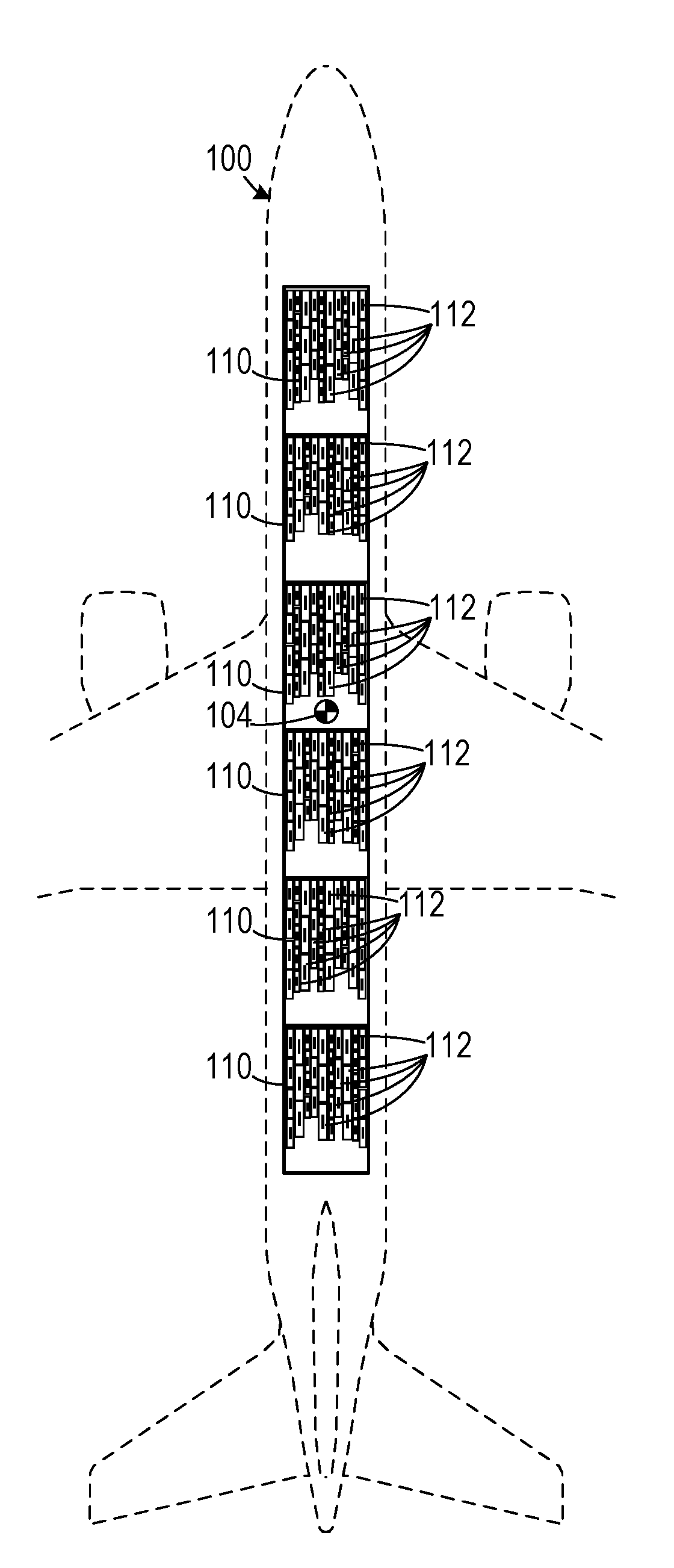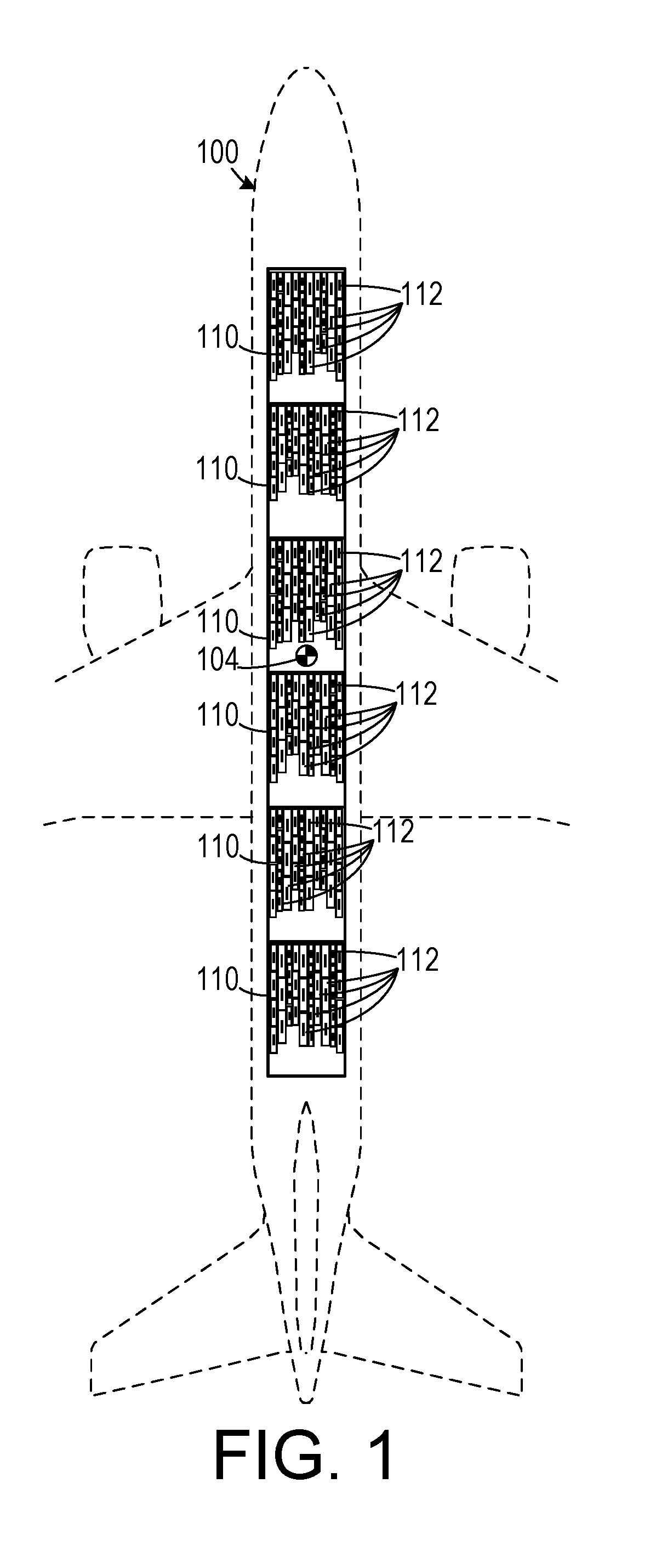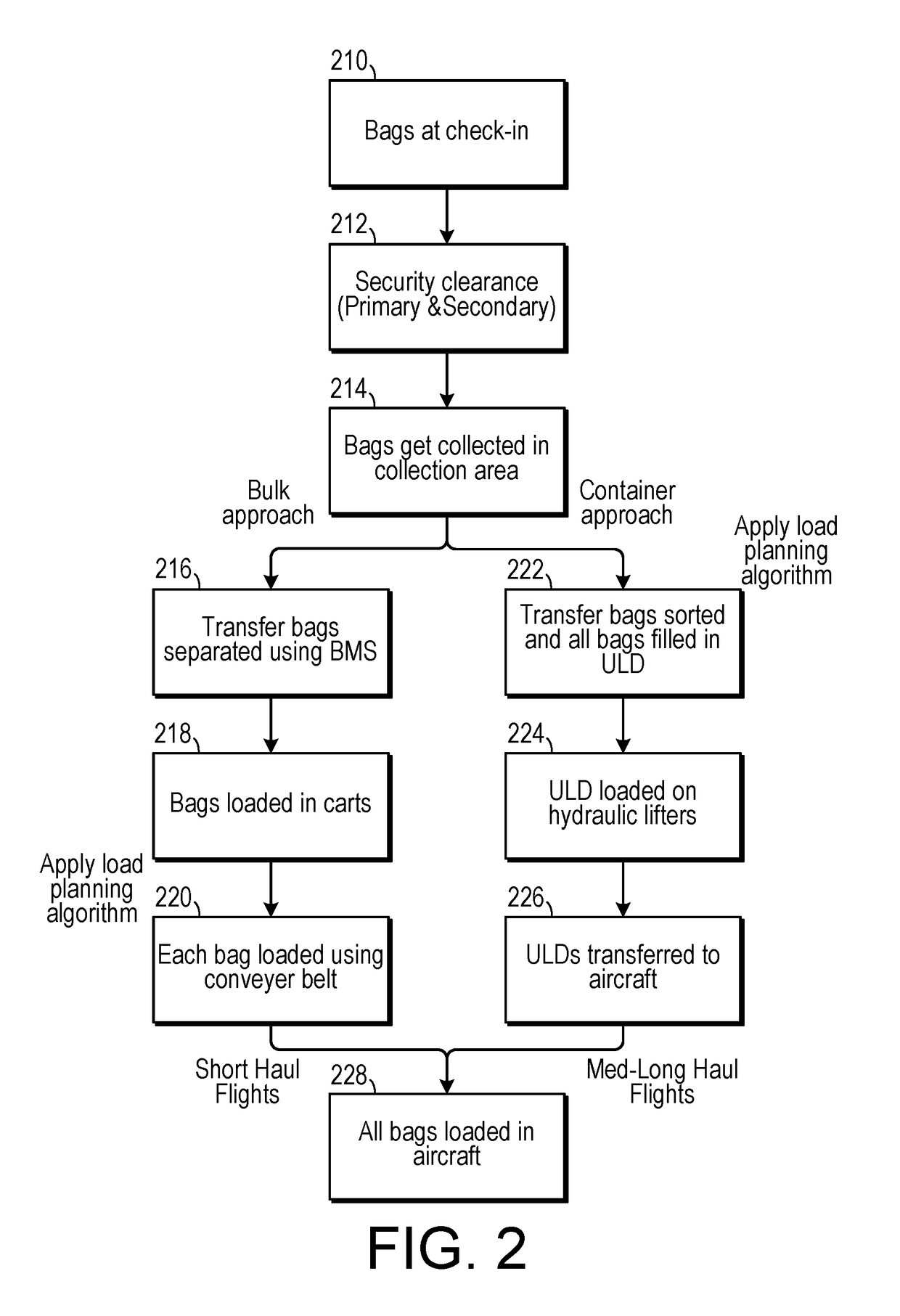Method For Optimizing the Placement of Check-In Bags in Aircraft
a technology for optimizing the placement of checked-in luggage in aircraft, applied in the field of aircraft weight and balance systems, can solve the problems of inefficient and expensive compensation of cg positions
- Summary
- Abstract
- Description
- Claims
- Application Information
AI Technical Summary
Benefits of technology
Problems solved by technology
Method used
Image
Examples
Embodiment Construction
[0014]A preferred embodiment of the invention is now described in detail. Referring to the drawings, like numbers indicate like parts throughout the views. Unless otherwise specifically indicated in the disclosure that follows, the drawings are not necessarily drawn to scale. As used in the description herein and throughout the claims, the following terms take the meanings explicitly associated herein, unless the context clearly dictates otherwise: the meaning of “a,”“an,” and “the” includes plural reference, the meaning of “in” includes “in” and “on.” Also, as used herein, “compartment” refers to the storage area in an aircraft, which is also called a bin, a storage space or a luggage / cargo storage compartment.
[0015]As shown in FIG. 1, an aircraft 100 has a plurality of luggage units 110 for storing luggage therein 112, which would be luggage sub-compartment in the case of smaller aircraft or unit load devices (ULDs) in the case of larger aircraft. The aircraft 100 also has a prefe...
PUM
 Login to View More
Login to View More Abstract
Description
Claims
Application Information
 Login to View More
Login to View More - R&D
- Intellectual Property
- Life Sciences
- Materials
- Tech Scout
- Unparalleled Data Quality
- Higher Quality Content
- 60% Fewer Hallucinations
Browse by: Latest US Patents, China's latest patents, Technical Efficacy Thesaurus, Application Domain, Technology Topic, Popular Technical Reports.
© 2025 PatSnap. All rights reserved.Legal|Privacy policy|Modern Slavery Act Transparency Statement|Sitemap|About US| Contact US: help@patsnap.com



